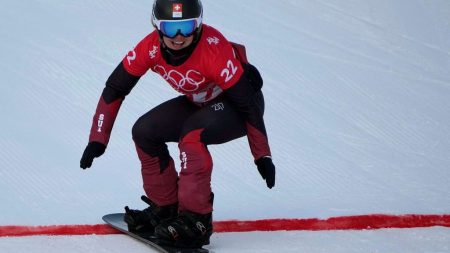Sebastian Samuelsson, a prominent biathlete known for his sharp shooting and skiing prowess, experienced a mixture of satisfaction and frustration in the Hochfilzen sprint. While his performance showcased his usual strengths, a single missed shot in the standing stage ultimately cost him a potential victory, leaving him in sixth place. This near-perfect performance, while commendable, highlighted the fine margins that separate triumph from disappointment in the demanding world of biathlon. The nine consecutive hits showcased his precision and control, yet the tenth, the one that eluded him, served as a stark reminder of the unforgiving nature of the sport where milliseconds and millimeters can drastically alter the outcome.
Samuelsson’s initial nine shots found their mark with impressive consistency. His prone shooting, often a crucial element in setting the stage for a successful race, was flawless. He executed each shot with the precision and focus of a seasoned competitor, maintaining his composure under the pressure of the competition. This strong start propelled him into a favorable position, placing him among the frontrunners as he transitioned to the more challenging standing shooting stage. The rhythm and efficiency he displayed in the prone position were a testament to his rigorous training and mental preparedness. This foundation set the stage for what initially appeared to be a potential podium finish, and perhaps even a victory.
The standing stage, however, presented a different challenge. This phase of the biathlon demands not only accuracy but also the ability to control breathing and maintain stability while on skis. The added physical exertion from the race prior to the shooting stage can make the standing shots considerably more difficult. While Samuelsson managed to hit the first four targets, the final shot, the elusive tenth, went astray. This single missed shot, in a sport where seconds can translate into significant distances on the course, proved costly. The penalty loop he subsequently incurred pushed him down the rankings, ultimately relegating him to a sixth-place finish.
The disappointment was palpable in Samuelsson’s post-race interview with SVT. While acknowledging the strong aspects of his performance, particularly the nine successful shots, he couldn’t hide his frustration at the missed opportunity. ”It’s clear that it’s frustrating,” he admitted. ”The last little bit, had I hit it, I would have won instead.” His words captured the bittersweet nature of the outcome, the knowledge that victory was within his grasp, only to be snatched away by a single missed shot. This sentiment likely resonated with many athletes who have experienced the fine line between success and near-misses in competitive sports.
Despite the setback, Samuelsson’s performance in Hochfilzen demonstrated his continued competitiveness at the highest level of biathlon. His skiing speed, a crucial component of the sport, remained strong throughout the race, allowing him to maintain a competitive position even after the penalty loop. This combination of speed and accuracy, albeit marred by the single missed shot, solidifies his standing as a force to be reckoned with in the biathlon world. His ability to quickly regain focus after the missed shot and continue to push himself on the ski course highlights his mental fortitude and determination.
Samuelsson’s experience in Hochfilzen serves as a microcosm of the challenges and triumphs inherent in biathlon. The sport demands not only physical prowess and technical skill but also mental resilience and the ability to perform under immense pressure. While the missed shot undoubtedly stung, it also provided a valuable learning experience, reinforcing the importance of maintaining unwavering focus until the very last shot. This experience will likely fuel his determination in future races, motivating him to strive for even greater precision and consistency in his pursuit of victory. The Hochfilzen sprint, while not resulting in a podium finish, served as a reminder of Samuelsson’s potential and his continued presence among the biathlon elite.














